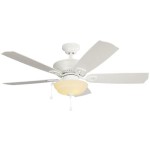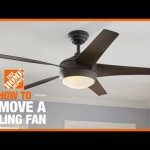Light Bulb In Ceiling Fixtures: Essential Aspects
Lighting plays a crucial role in enhancing ambiance, functionality, and overall aesthetics within a space. Ceiling fixtures, when paired with compatible light bulbs, become versatile lighting solutions that can complement any interior design. However, choosing the right light bulb for a ceiling fixture requires consideration of several essential aspects to ensure optimal performance and visual appeal.
1. Socket Type: The initial step is to identify the socket type of the ceiling fixture to determine the compatible bulb type. Common socket types include E26/E27 (standard), GU10 (bi-pin), and MR16 (mini reflector). Using an incompatible bulb can lead to electrical hazards or damage to the fixture.
2. Wattage and Brightness: The wattage of a light bulb indicates its energy consumption and, indirectly, its brightness. Consider the size of the room and the desired illumination level when selecting the appropriate wattage. Higher wattage bulbs produce brighter light, ideal for larger spaces or tasks requiring intense lighting. Conversely, lower wattage bulbs provide softer, ambient light suitable for smaller spaces or creating a cozy atmosphere.
3. Light Color (Temperature): Light bulbs emit light in various color temperatures, measured in Kelvins (K). Warm white (2700K-3000K) creates a warm, inviting ambiance, reminiscent of incandescent bulbs. Cool white (4000K-5000K) emits a crisp, energizing light ideal for workspaces or areas requiring increased visibility. Daylight (5500K-6500K) simulates natural sunlight, enhancing color accuracy and detail.
4. Beam Angle: The beam angle of a light bulb describes how widely the light is distributed. Narrow beam angles concentrate light in a focused area, creating a spotlight effect. These are suitable for accent lighting or highlighting specific areas. Wide beam angles disperse light over a broader area, providing more general illumination. The beam angle should align with the intended use and the size of the space.
5. Dimmability: If adjustable lighting is desired, select dimmable light bulbs. These bulbs allow for control over the brightness level, enhancing ambiance and energy efficiency. Not all light bulbs are dimmable, so check the product specifications before purchasing. Dimming switches are also necessary for controlling the brightness of dimmable bulbs.
6. Energy Efficiency: Energy-efficient light bulbs, such as LEDs, CFLs, and halogen bulbs, consume less energy while producing comparable or better light output compared to traditional incandescent bulbs. LEDs are particularly energy-efficient, with a lifespan of up to 50,000 hours, significantly reducing maintenance and replacement costs.
By considering these essential aspects, you can select the right light bulb for your ceiling fixture, ensuring an optimal lighting solution that caters to your specific needs and enhances the overall ambiance of your space.

The New Look In Ceiling Lights Hanging Light Bulb Fixtures Ideas Advice Lamps Plus

Solving 5 Common Light Fixture Problems

The New Look In Ceiling Lights Hanging Light Bulb Fixtures Ideas Advice Lamps Plus

Types Of Lighting Fixtures
Dome Ceiling Light Bulb Replacement Ifixit Repair Guide

Ceiling Lights E27 Eglo

Diffe Types Of Led Ceiling Lamps For Your Home Chint Blog

Modern Aisle Light Hall Crystal Ceiling Lamp Fixture Black Gold Hallway Lighting

Edison Bulb Ceiling Lamp Flush Mount Mid Century Modern

Lepro 24w 13 Inch Led Flush Mount Ceiling Light Fixture For Kitchen Bathroom Bedroom Porch Hallway Non Dimmable
Related Posts








